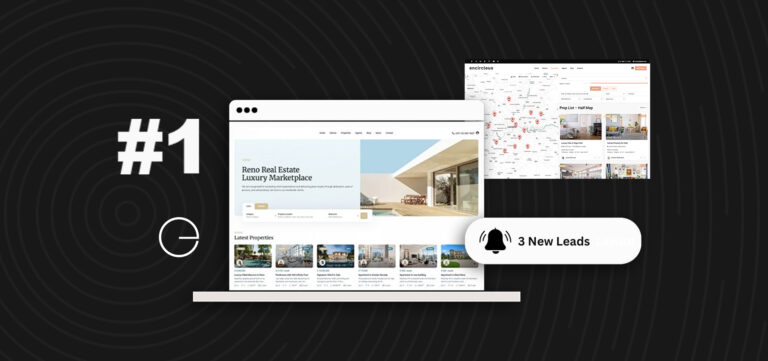A practical guide for real estate agents who want to convert browsers into buyers.
In a market flooded with listings, your property description is more than just a box to tick — it’s your first real shot at making someone stop scrolling and take action. Photos draw people in, but it’s the words that seal the deal.
At Encircleus, we build websites that put your listings front and center — but it’s the language you use that helps drive interest and leads. Let’s break down how to write descriptions that do more than describe — they sell.
1. Lead with a Hook, Not a Floorplan
Your headline is the billboard. If it doesn’t grab attention, your listing may be skipped entirely.
Instead of:
“3BR, 2BA Home in Suburbs”
Try:
“Sun-Drenched Family Home with Private Garden Oasis”
Or:
“Mid-Century Charm Meets Modern Luxury in Prime Location”
Tip: Choose the most desirable feature — a view, a layout, a location — and build your hook around that.
2. Start With a Feeling
Don’t jump straight into square footage. Set the scene with emotion or atmosphere.
Instead of:
“This 2,000 sq ft home has 3 bedrooms and 2 bathrooms.”
Try:
“Wake up to natural light pouring through floor-to-ceiling windows in this warm, welcoming retreat — perfect for morning coffee or weekend lounging.”
Make buyers feel like they’re already there.
3. Paint Pictures with Detail
Details sell. Vague language doesn’t. Bring listings to life with sensory and lifestyle-driven language.
Instead of:
“Nice kitchen with appliances”
Try:
“A chef’s kitchen complete with quartz countertops, a 6-burner gas stove, custom cabinetry, and an oversized breakfast bar for Sunday brunches or weeknight homework sessions.”
Instead of:
“Spacious backyard”
Try:
“Step into a private backyard built for entertaining — with a covered patio, firepit lounge area, and plenty of space for the kids (or dogs) to roam.”
4. Organize with Flow
Structure your description in a way that mimics the experience of walking through the home:
- Start with the entry and living spaces
- Move to the kitchen and dining areas
- Then highlight bedrooms and bathrooms
- Close with outdoor space, neighborhood perks, or extras
Example flow:
“As you enter, you’re greeted by vaulted ceilings and oak hardwood floors that stretch across the open-plan living and dining space. The heart of the home — a designer kitchen — flows effortlessly to a cozy den and out to a lush, landscaped backyard. Upstairs, the primary suite offers a peaceful escape with a spa-inspired ensuite. Located just minutes from local parks, coffee shops, and top-rated schools.”
5. Don’t Forget the Call to Action
Once you’ve built the desire, tell them what to do next.
Examples:
“This one won’t last — book your private showing today.”
“Want the full experience? Contact [Agent Name] to schedule a tour.”
“Reach out now to make this home yours before it hits the market.”
Even better — pair your description with contact buttons and lead capture tools (which Encircleus can integrate for you!).
6. Bonus: Words to Use (and Avoid)
Use words that evoke:
- Luxury: upscale, refined, designer, curated, premium
- Comfort: cozy, peaceful, welcoming, light-filled
- Energy: vibrant, open-concept, sun-soaked, entertainer’s dream
- Scarcity: rare, one-of-a-kind, just listed, limited opportunity
Avoid overused fluff:
- “Nice”
- “Great”
- “Must-see”
- “Charming” (unless you back it up!)
- “Unique” — unless you explain why
Final Thoughts
Writing a great property description isn’t about stuffing in facts — it’s about framing them with clarity, warmth, and imagination. You’re not just listing a property. You’re helping someone imagine a new chapter of their life.
And with the right website and tools from Encircleus, you can make sure every description gets seen, gets read, and gets results.
💡 Want help turning your listings into high-performing digital experiences? Let’s chat.
📩 Contact us to get started.



